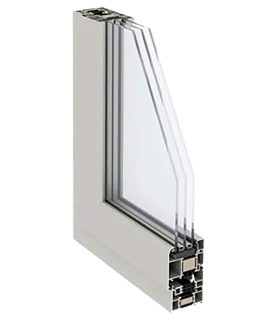Exploring the Fundamentals and Techniques of Metal Casting in Modern Manufacturing
The Art and Science of Metal Casting A Comprehensive Overview
Metal casting is a fundamental manufacturing process that involves pouring molten metal into a mold to create various shapes and components. This ancient technique, which dates back thousands of years, has evolved significantly, becoming an indispensable method in modern manufacturing. The versatility and efficiency of metal casting make it a preferred choice for producing components across various industries, including automotive, aerospace, and construction.
The Casting Process
The casting process begins with the selection of the appropriate metal or alloy, which may include materials such as aluminum, copper, iron, and steel. Each metal has its unique properties, influencing factors such as strength, weight, and corrosion resistance. Once the material is chosen, it is melted in a furnace until it reaches a liquid state. The temperature at which this occurs varies depending on the metal type, necessitating skilled monitoring to prevent overheating or contamination.
After reaching the desired temperature, the molten metal is poured into a pre-prepared mold, which shapes the final product. Molds can be made from various materials, including sand, metal, or ceramics, depending on the casting method employed. The choice of mold material affects the casting accuracy, surface finish, and overall cost of production.
Molding Techniques
Several molding techniques are used in metal casting, each with its advantages and applications
1. Sand Casting This is the most common technique, characterized by its simplicity and low cost. A mixture of sand and a binder is formed into a mold, making it suitable for large and complex shapes. However, it may yield rough surface finishes, requiring further machining.
2. Die Casting This method involves forcing molten metal into a steel mold under high pressure. It produces high volumes of precise components with excellent surface finishes. Die casting is commonly used for producing parts in the automotive and consumer goods industries.
metal casting

3. Investment Casting Also known as lost-wax casting, this method offers high accuracy and detail, making it ideal for intricate designs. A wax model is coated with a refractory material, and once it hardens, the wax is melted away, leaving a cavity for the molten metal. This process is often used in jewelry and aerospace components.
4. Continuous Casting This technique involves continuously pouring molten metal into a mold, allowing it to solidify as it is drawn from the opposite end. Continuous casting is extensively used in the steel industry for producing billets, slabs, and blooms.
Advantages and Applications
Metal casting is favored for its ability to produce intricate shapes that would be difficult or impossible to achieve through other manufacturing processes. Moreover, it allows for cost-effective production, especially in large volumes. Cast components exhibit excellent mechanical properties, making them suitable for high-stress applications.
The automotive industry significantly benefits from casting technologies, with engine blocks, transmission cases, and other critical components being produced using these methods. The aerospace sector also relies on metal casting for producing lightweight yet strong parts, such as turbine blades and structural components.
Additionally, metal casting has applications in art and sculpture. Artists employ casting techniques to create detailed sculptures and decorative items, showcasing the aesthetic potential of metals.
Challenges and Innovations
Despite its many advantages, metal casting faces challenges, including defects such as porosity, shrinkage, and inclusions. Addressing these issues requires rigorous quality control and advancements in technology. Innovations such as computer-aided design (CAD), simulation software, and 3D printing are playing a crucial role in refining the casting process, allowing manufacturers to predict and prevent casting defects more efficiently.
In conclusion, metal casting stands as a vital and versatile manufacturing process that bridges ancient techniques with modern technology. Its ability to produce complex shapes and strong components ensures its continued relevance across various industries. As innovation continues to shape the future of manufacturing, metal casting will undoubtedly adapt, maintaining its status as a cornerstone of industrial production.
-
Why Choose TJJ as Your Window and Door Hardware Manufacturer?NewsOct.28,2024
-
The Advantages of Cast Iron Stove Plates: A Timeless Choice for Your KitchenNewsOct.28,2024
-
Aluminium Windows Profiles: Benefits and FeaturesNewsOct.28,2024
-
Innovations in Cast Iron Panel TechnologyNewsOct.28,2024
-
The Benefits of Customizing Your Wrought Iron Fence PartsNewsOct.28,2024
-
The Immortal Legacy of Cast Iron Spears: From War to Decorative UseNewsOct.21,2024
-
 Why Choose TJJ as Your Window and Door Hardware Manufacturer?Oct-28-2024Why Choose TJJ as Your Window and Door Hardware Manufacturer?
Why Choose TJJ as Your Window and Door Hardware Manufacturer?Oct-28-2024Why Choose TJJ as Your Window and Door Hardware Manufacturer? -
 The Advantages of Cast Iron Stove Plates: A Timeless Choice for Your KitchenOct-28-2024The Advantages of Cast Iron Stove Plates: A Timeless Choice for Your Kitchen
The Advantages of Cast Iron Stove Plates: A Timeless Choice for Your KitchenOct-28-2024The Advantages of Cast Iron Stove Plates: A Timeless Choice for Your Kitchen -
 Aluminium Windows Profiles: Benefits and FeaturesOct-28-2024Aluminium Windows Profiles: Benefits and Features
Aluminium Windows Profiles: Benefits and FeaturesOct-28-2024Aluminium Windows Profiles: Benefits and Features












